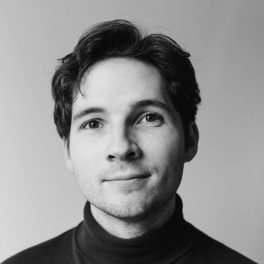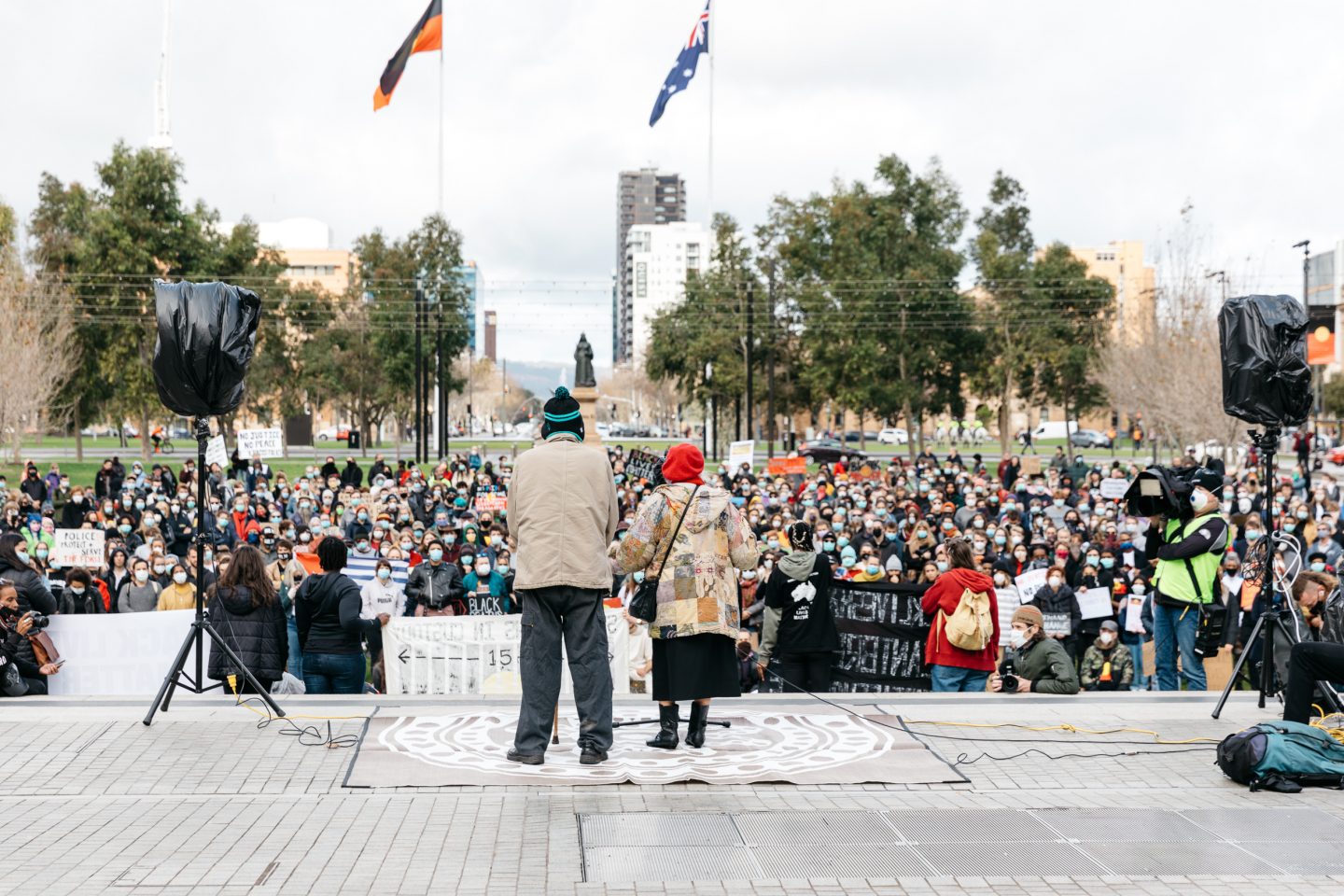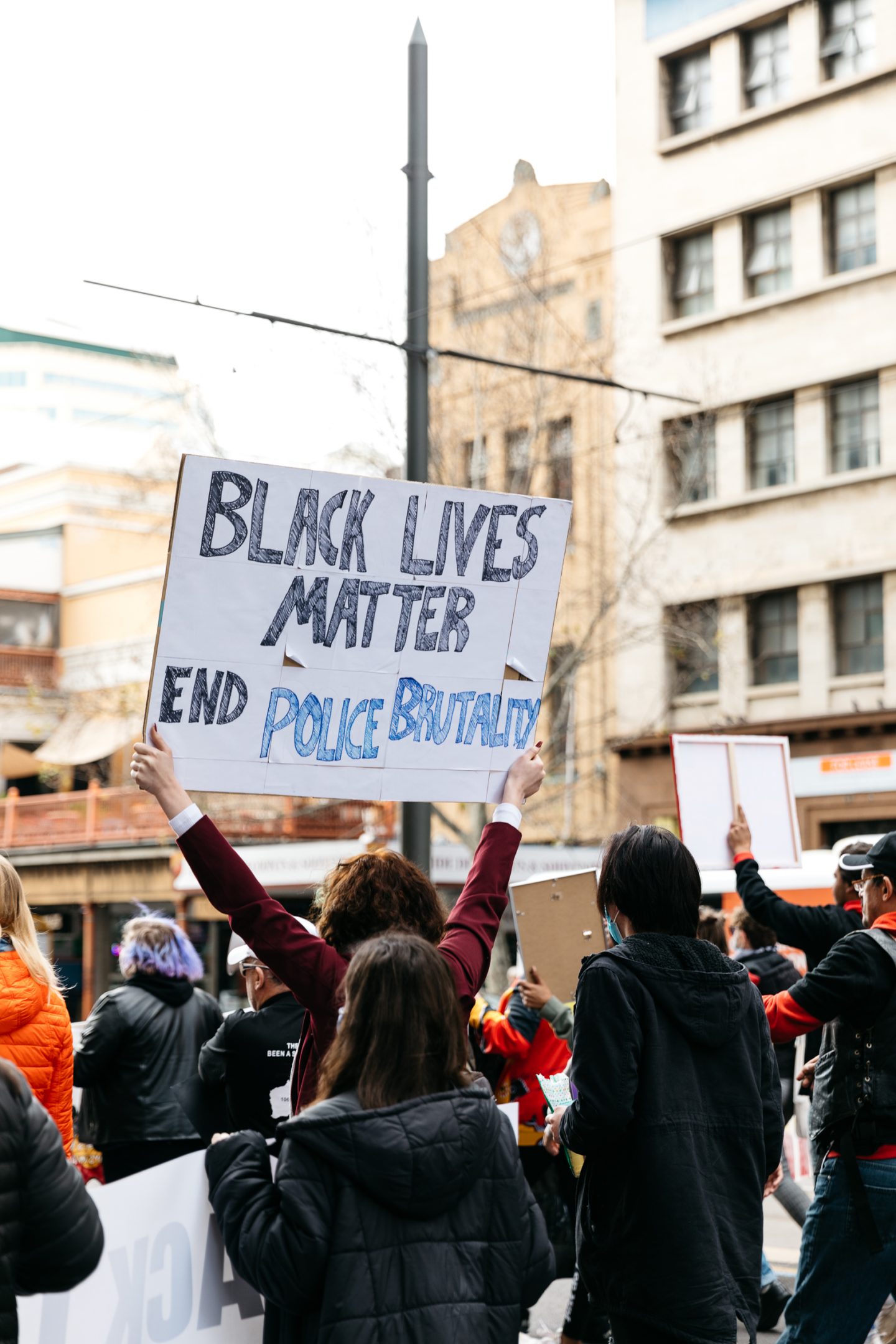
Walter Marsh
Walter is a writer and editor living on Kaurna Country.

The state government picked an uncomfortable moment to unveil a new, assault rifle-carrying unit it says will become a permanent presence on Adelaide’s streets.
Last week South Australia Police uploaded a photo to its social media accounts of three officers strolling through Rundle Mall, the cheery, everyday backdrop of a florist and pyjama retailer jarring more than a little with the sight of anti-ballistic vests and assault rifles.
This unusual tableau announced the arrival of SA Police’s new 48-person Rapid Response team, part of a $9 million ‘Security Response Section’ program making such officers a routine part of public events and “vulnerable and at-risk” spaces such as the Adelaide Oval, Railway Station, Central Market and Rundle Mall.
An accompanying statement from Police Minister Corey Wingard’s cited a general risk of “extremists around the world” who are “increasingly seeking to inspire like-minded individuals to their repugnant way of thinking”, along with “domestic events of a violent nature”. While bracing the public to not be alarmed by the newly-armed unit, he also explained that it would be a constant “deterrent to anyone thinking of trying anything on”.
The community response to the news was swift and polarised, from hundreds of impassioned social media comments that eventually saw SA Police remove the original Facebook post and disable Instagram comments to a 7,500-strong change.org petition calling for the disbandment of the newly formed unit.
But why the fresh backlash? The rhetoric is not wholly dissimilar to language used when the program was first flagged in 2019, where it was said SRS officers would be deployed to “at-risk” crowded places, “active armed offender events” and “other violent incidents”. Perhaps the answer lies in the “at-risk” label, which this week was revealed to be a rather catch-all designation ranging from the Christmas Pageant and Carols By Candlelight to shopping centres.
Wingard explained that “all the the other states have something very, very similar” and we “now join them with that extra level of security”, but when New South Wales and Victorian Police announced plans to acquire new ranges of semi-automatic rifles in 2017 and 2019, authorities specifically reassured communities they would not be used in general patrols.
In 2017, New South Wales Police said its Public Order and Riot Squad’s newly acquired Colt M4 rifles would be stowed away in patrol cars unless required, and were unlikely to be seen on the street outside major events like Sydney’s New Year’s Eve celebrations – at least while the national terror threat level remained at ‘Probable’. Over in Victoria, Deputy Commissioner Shane Patton told The Age in December that “unless they are responding to a critical incident, the rifles will be securely stored at the police station or in vehicles and the community won’t see them”.
By contrast, the South Australia Police has so far sought to assuage community concerns about the presence of these weapons “out and about in the streets” by posting a video with the broad, hand-waving justification that “the world has changed”, alongside images from the 2005 London bus bombing and 2017 Bourke Street car attack.
Coming just days before a second Black Lives Matter protest in Adelaide, the timing of the SRS announcement has inevitably drawn it into a broader conversation about the role of police and deadly force in communities that is happening around the world. The aftermath of George Floyd’s death and the shocking scenes of militarised US police brutalising non-violent protestors, bystanders and media alike have brought once-radical ideas like ‘defunding’ traditional policing in favour of community-based programs and justice reinvestment into the mainstream.

At the same time, the COVID-19 pandemic has seen Australian states and territories further insert police into their communities as officers enforce hastily written and frequently revised lockdowns, often in ways that have demonstrated racial and socio-economic inequalities in real time. Just this weekend, we saw Victoria put armed police officers on every floor of nine social housing towers to enforce its latest COVID lockdown.
Despite attempts to distance South Australian policing from the systemic issues and unrest seen in other jurisdictions, recent accusations of racial profiling and excessive force in the arrest of a 28-year-old Aboriginal man in Kilburn, and online abuse levelled at a Sudanese Australian human rights advocate by a sworn SAPOL officer, offered a reminder that our own police are not above reproach or critique. Such context certainly was not lost on attendees at Saturday’s rally – even if the Rapid Response team ultimately did not appear to be deployed alongside the mounted and general duties officers in attendance.
Two decades on from 9/11, calls from law enforcement bodies for greater powers of surveillance, firepower and secrecy in the nebulously defined name of “anti-terror” are not new or surprising. Nor is the tendency for governments to grant them, often with the bipartisan support of oppositions wary of being wedged as ‘soft’ on crime or terror. Somewhere along the way, the more nuanced, and complex discussion of just who is being made to feel safe by all this security theatre seems to have become a sign of weakness rather than strength.
But it isn’t always this way. In New Zealand last month, a new ‘armed response team’ introduced in the wake of the Christchurch shootings was abandoned after a six-month trial following sustained community opposition. “It is clear to me that these response teams do not align with the style of policing that New Zealanders expect,” Police Commissioner Andrew Coster said of the move. “How the public feels is important – we police with the consent of the public, and that is a privilege.”
If New Zealand is capable of such reflection even in the wake of a massacre, it’s little wonder people are disappointed Christchurch’s sister city chose this moment to give its police more guns.

Walter is a writer and editor living on Kaurna Country.